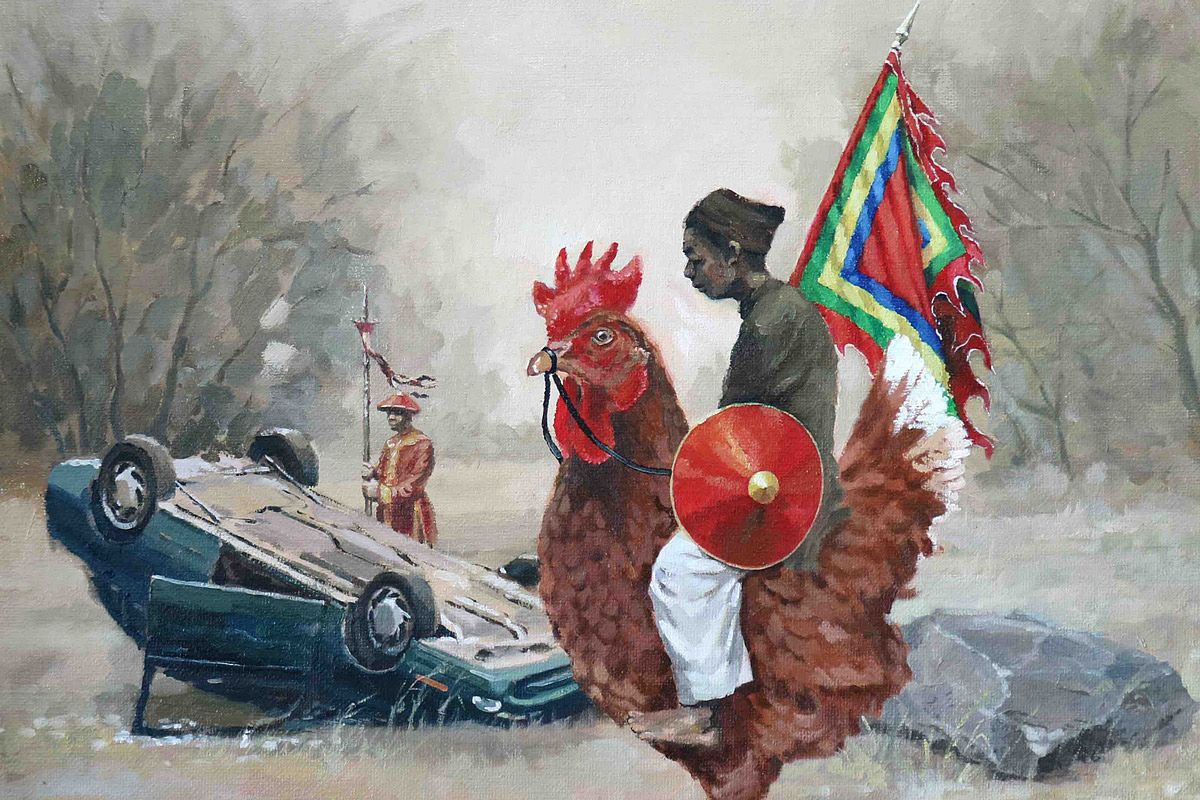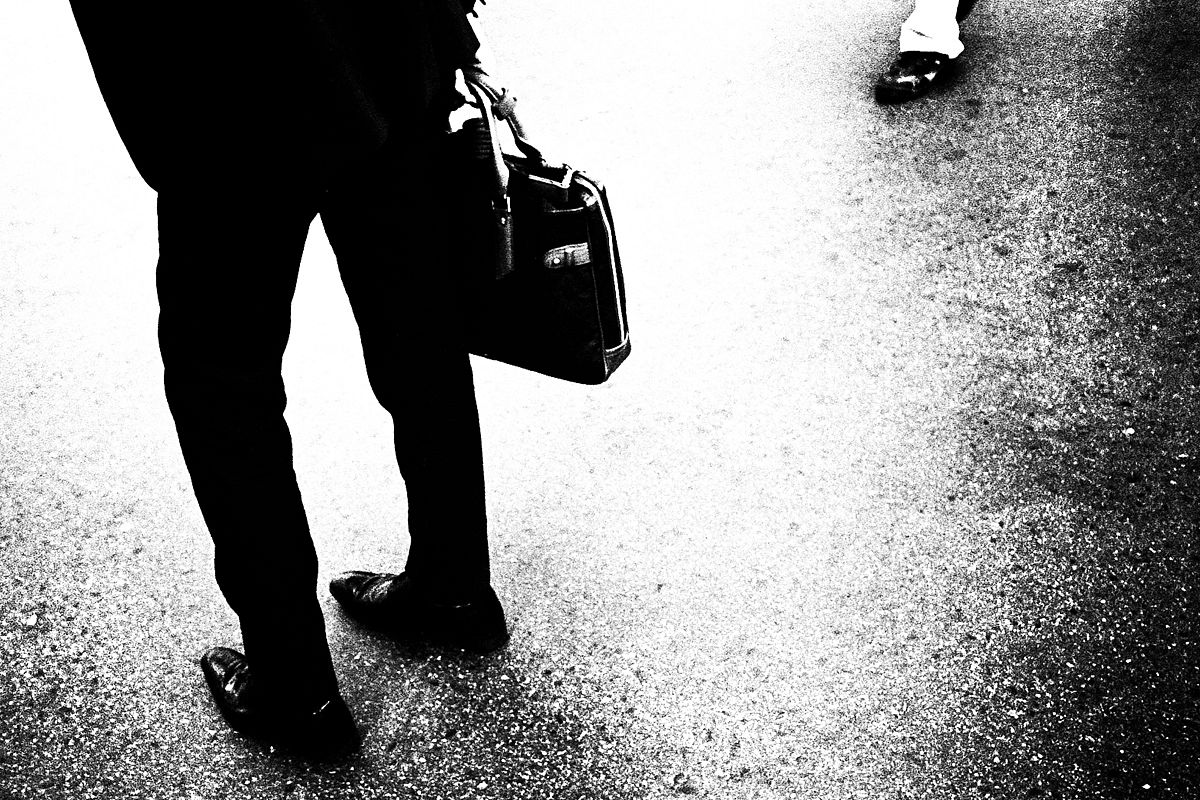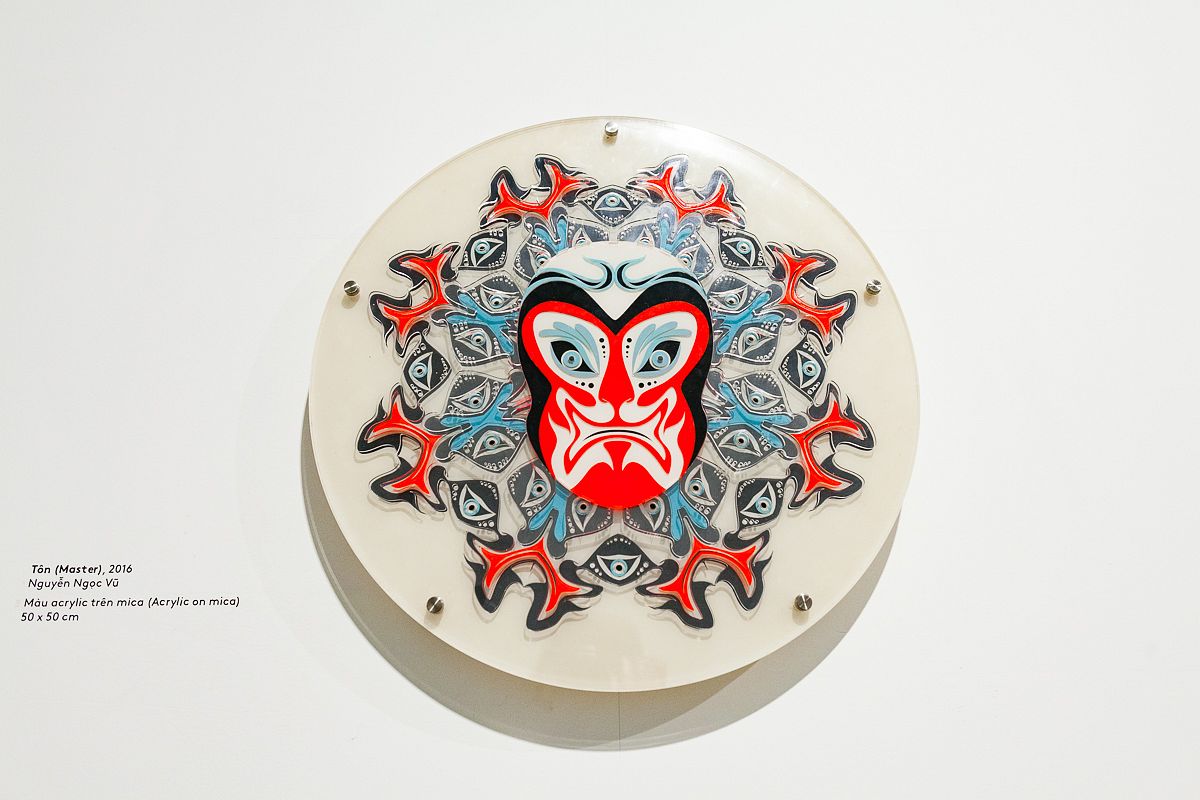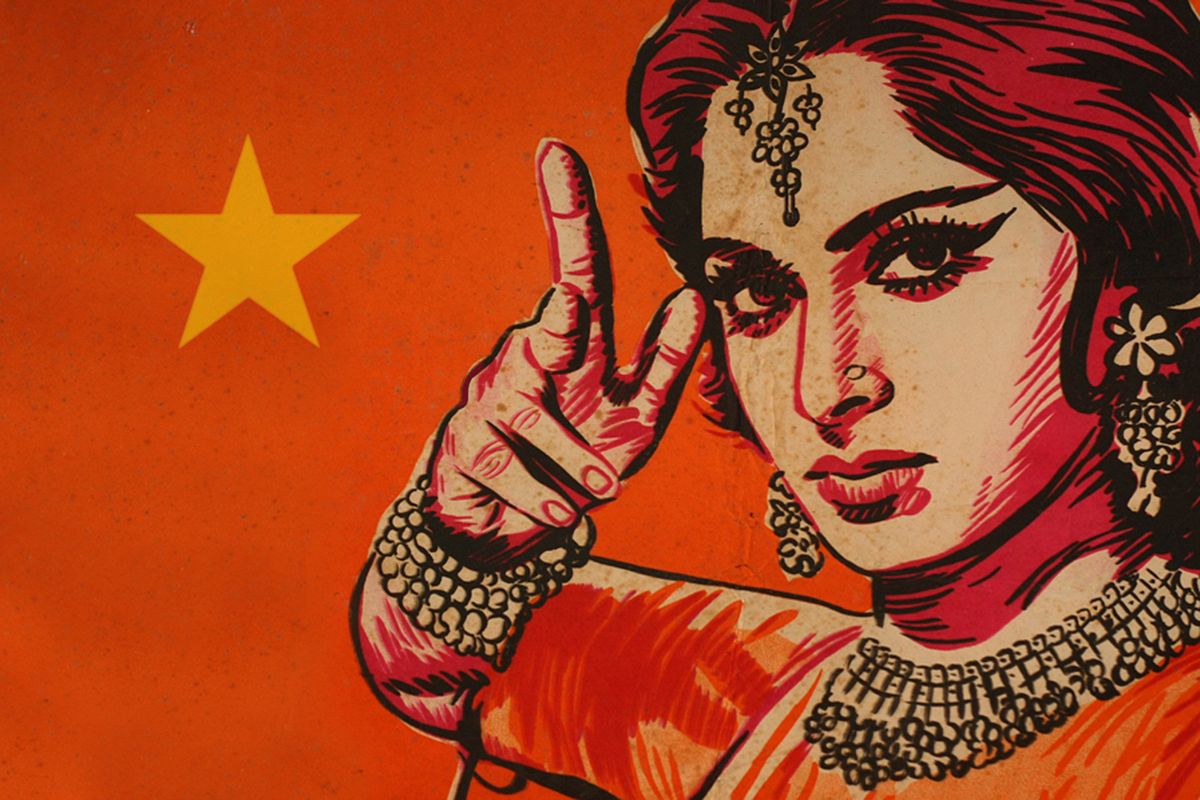Cambodia’s Urban Arts Festival has had its fair share of controversy in only two years, however that hasn’t stopped the festival’s founders and aspiring artists from inspiring the next generation of Khmer street artists.
“The point [of street art] is to do something meaningful,” artist Daniel Rathmony Ou tells Saigoneer. “That is what Cambodian culture is about.”
Seated in front of a geometric, blue-and-gold mural he painted along with fellow artist Mike Sovivorth Orpov, Ou explains the meaning behind their work.
“My style is a mixture between hieroglyphics and semasiographics – that is, symbols that represent meaning but have no sound,” says Ou.
Orpov chimes in: “It’s kbach.”


Mike Sovivorth Orpov (left) and Daniel Rathmony Ou (right) talk about their respective styles. Photos by Dominic Ronzo.
Kbach is the Khmer word for traditional Cambodian design elements found in architecture, art and even the movements of traditional dance; for example, the lotus flower shape that is used to create intricate patterns along borders inside Angkor Wat.
“Kbach is a flourish,” explains Ou. “And each flourish has a different meaning.”
Using the influence of kbach, the two young men create stylized street art based on Khmer script. Ou’s is sporadic and comes to him as he paints. Orpov creates shapes and incorporates English phrases into his artwork using a stylized, Khmer-inspired script.
“Kbach is something that has defined our culture, that defined us from everyone else in the world. So, I think that’s important to work with what we got,” says Ou.
Having painted professionally for five years now, the two artists strive to be accepted in a country that doesn’t know – or understand – much about street art.
“There was a lot of judgement,” says Orpov. “About why I am using Khmer letters with no meaning. But there is meaning for me. I always try to tell people about my work, and try to explain what I do. It’s more about defining myself.”
Not only is street art relatively new to Cambodia, but there is also a lot of misunderstanding about its form and function.
“Making urban interventions is not that easy in Phnom Penh,” says Jerome Chifumi, co-founder of Cambodia’s Urban Arts Festival. “The local population doesn’t know much about this culture, but they understand the municipality sees it from bad eyes.”

Photo by Dominic Ronzo.
Chifumi and Theo Vallier are two French street artists on a mission to bring a street art scene to Cambodia. Ever since starting the Urban Arts Festival in 2014, they have encouraged a recognition of street art as art, not simply graffiti.
“The goal is to promote street art in Cambodia,” says Vallier. “We want to get a new generation to understand what it is and how they can use it to express themselves.”
The first festival started out with sponsors, funding and a lot of interest; however, controversy wasn’t far behind. American artist Miles MacGregor, who was invited to participate in the festival, painted a huge mural on an apartment block contentiously slated for demolition. The painting was a portrait of Moeun Thary, a local embroider who lived in the building.
“Apparently, they had paid one guy, but it was not the right guy, and so the authorities said they had no authorization to do it,” says Vallier.
“The mural was painted on a symbolic and very visible place in the city. The municipality sent a clear message by whitening the artwork as soon as the artist finished it,” explains Chifumi.
After the mural was painted over, it became part of local legend in Phnom Penh. Images of the artwork were shared widely on social media, and smaller versions were stenciled around the city in protest. The festival had become politicized.
“Most people are very happy to have us paint on their walls as long as it is not political,” says Vallier. “We are trying to avoid politics. We are just trying to push the young generation to express themselves.”

One of Urban Arts Festival co-founder Jerome Chifumi's completed artworks. Photo by Jessica Tana.
This year, the third installment of the Urban Arts Festival has faced less funding and more challenges in obtaining permits. The French Institute has dropped out, leaving festival organizers to find a new venue, in addition to new sponsors. However, Chifumi and Vallier remain committed.
“We found other partners and we are currently working on pushing the level higher than before,” says Chifumi. “The festival will run for 10 days, beginning in December. A lot of murals have been scheduled with local and international artists, and this year our musical program will be boosted as we plan to have performances in seven different venues. A lot of good surprises for sure.”
Eager to take part in the Urban Arts Festival this year, Ou and Orpov say that street art, and art in general, is an important part of healing for Cambodia and expanding people’s creative potential.
“I really hope that people can learn to appreciate art more,” says Ou. “Art is something that changes the way we think. It opens us to new ideas and growth. That’s what our country needs. That’s what our culture needs. That’s the most important part that was lost, ever since the genocide. So, if we can start to at least look and listen, to whatever is happening now, then there might be a chance for the future.”
Jessica Tana is a freelance journalist, amateur illustrator and terrible ukulele player based in Phnom Penh.















